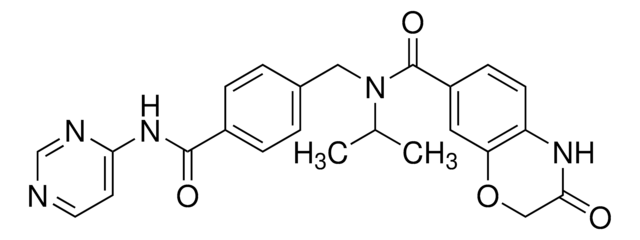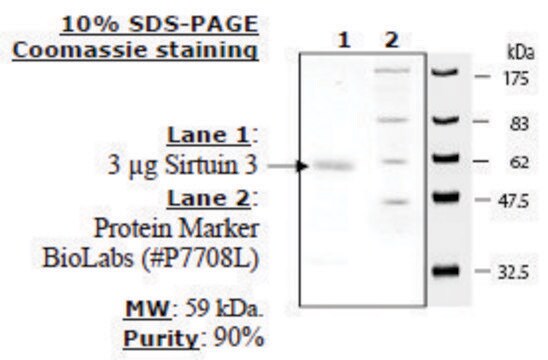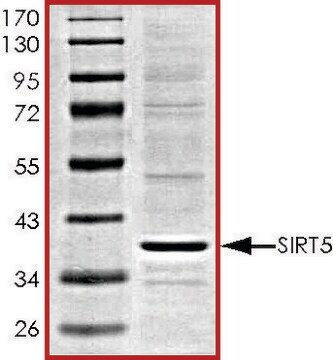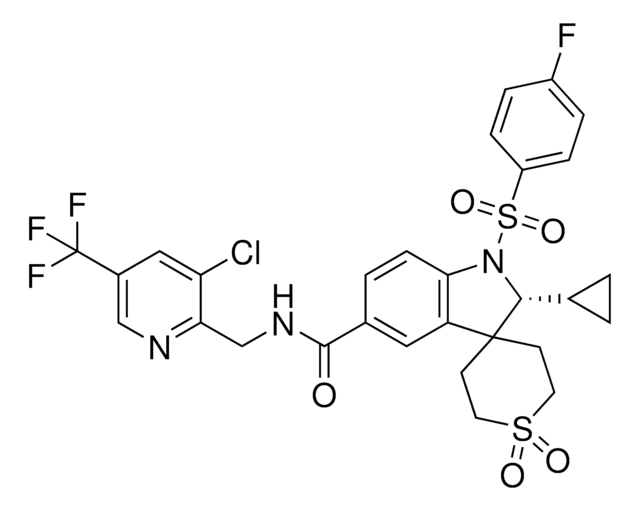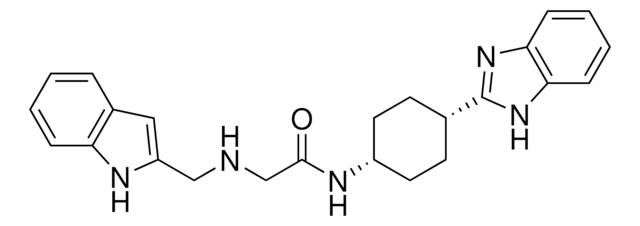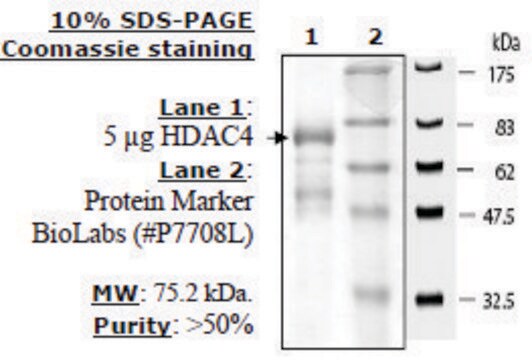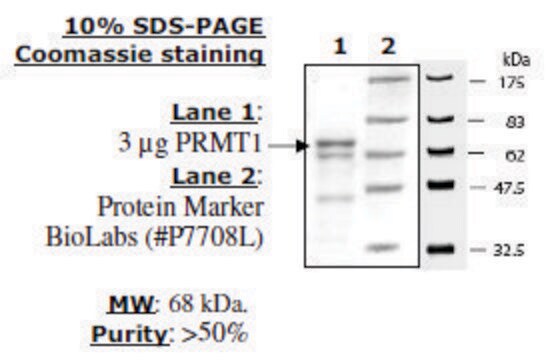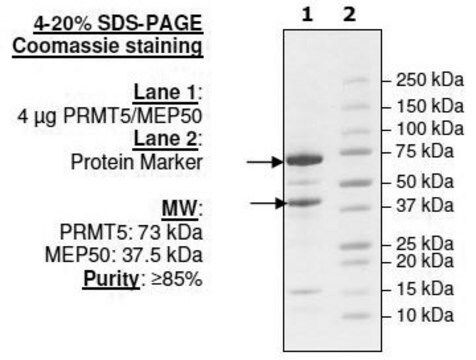SRP0119
Sirtuin 5 human
recombinant, expressed in E. coli, ≥50% (SDS-PAGE)
Synonym(s):
NAD-dependent ADP-ribosyltransferase sirtuin-5, SIR2L5, SIRT5, sir2-like 5
About This Item
Recommended Products
biological source
human
recombinant
expressed in E. coli
Assay
≥50% (SDS-PAGE)
form
aqueous solution
mol wt
59.8 kDa
packaging
pkg of 100 μg
storage condition
avoid repeated freeze/thaw cycles
concentration
>0.02 mg/mL
NCBI accession no.
UniProt accession no.
shipped in
dry ice
storage temp.
−70°C
Gene Information
human ... SIRT5(23408)
General description
Human Sirtuin 5, GenBank Accession No. NM_012241), full length with N-terminal ST tag, MW = 59.8kDa, expressed in Escherichia coli expression system.
Application
Biochem/physiol Actions
Physical form
Preparation Note
Storage Class Code
10 - Combustible liquids
WGK
WGK 3
Flash Point(F)
Not applicable
Flash Point(C)
Not applicable
Choose from one of the most recent versions:
Certificates of Analysis (COA)
Don't see the Right Version?
If you require a particular version, you can look up a specific certificate by the Lot or Batch number.
Already Own This Product?
Find documentation for the products that you have recently purchased in the Document Library.
Our team of scientists has experience in all areas of research including Life Science, Material Science, Chemical Synthesis, Chromatography, Analytical and many others.
Contact Technical Service